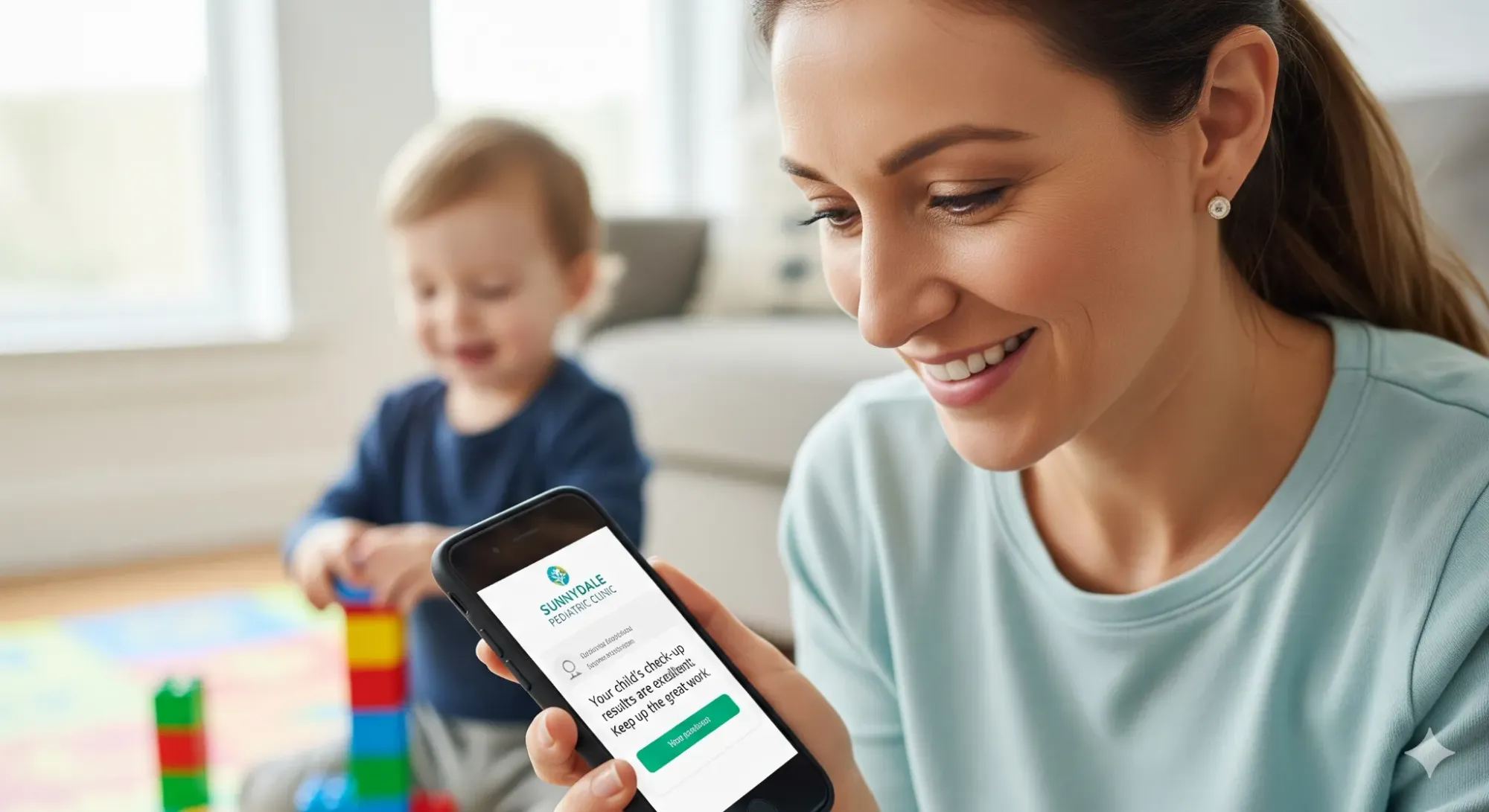
Family adherence to regular pediatric follow-up is one of the biggest challenges faced by clinics and healthcare professionals. Even with the growing emphasis on preventive medicine, it is common for many parents to take their children to the doctor only in cases of illness or urgency, neglecting the importance of continuous monitoring. This reality compromises both children’s health and the long-term relationship between families and healthcare institutions.
When the focus is only on treating symptoms, opportunities for prevention, early detection of developmental issues, and guidance for families on essential aspects of childhood development are lost. In addition, the lack of a trust bond with the pediatrician or clinic can lead to inconsistent care. In this article, we will discuss how to ensure family adherence to pediatric follow-up.
Before we continue, we need to ask: Are you already familiar with Ninsaúde Clinic? Ninsaúde Clinic is a medical software with an agile and complete schedule, electronic medical records with legal validity, teleconsultation, financial control and much more. Schedule a demonstration or try Ninsaúde Clinic right now!

Why Pediatric Appointments Are a Constant Challenge
Parents’ busy routines, combined with the false perception that “everything is fine” in the absence of symptoms, often lead to preventive visits being postponed or ignored. Many only seek the pediatrician when faced with fever, cough, or other visible signs.
This behavior results in missed opportunities for disease prevention, vaccinations, monitoring of growth and development, and timely interventions in behavioral or nutritional issues.
For clinics, it means instability in patient flow, making it difficult to forecast and plan resources. For children, it presents a significant risk: without regular follow-up, it becomes harder to identify conditions such as obesity, motor delays, or emotional disorders.

The Value of Continuous Follow-Up in Children’s Health
Regular pediatric visits go far beyond detecting diseases. They are fundamental for guiding parents on proper nutrition, healthy sleep habits, the introduction of new foods, behavior, and other essential aspects.
A structured follow-up allows clinics and pediatricians to:
- Prevent complications, such as anemia, recurring infections, or eating disorders.
- Identify growth and developmental deviations early.
- Offer personalized support to families, respecting each child’s particularities.
- Build a strong relationship of trust between parents and healthcare professionals.
The clinic ceases to be just a place for treatment and becomes seen as a partner in childhood development, playing an active role in health education.
Communicating with Parents: Turning Data into Trust
Well-informed parents are engaged parents. That’s why clear and accessible communication is essential to strengthen adherence to pediatric follow-up.
The pediatric team should translate technical terms and use tools such as:
- Structured reports with growth and development indicators.
- Visual comparisons to show progress over time.
- Written guidance in friendly language, sent after each visit.
These practices increase parents’ understanding of the importance of follow-up and reinforce the clinic’s professionalism and welcoming approach.

Growth Charts: The Tool That Makes Follow-Up Tangible
Growth charts are among the most effective tools for translating medical data into information families can understand.
By graphically presenting weight, height, BMI, and other parameters, they:
- Make it easier to track the child’s health over time.
- Allow early detection of deviations.
- Enable more objective and less abstract conversations with parents.
Software like Ninsaúde Clinic offers integrated growth chart features within the electronic health record (EHR), allowing professionals to update data in real time and display charts during visits, reinforcing transparency in care.
Engagement Through Visualization: How Charts Encourage Return Visits
Using graphs and visual data not only facilitates understanding but also works as a motivational factor. When parents can clearly see their child’s progress, they tend to value follow-up more and keep appointments up to date.
This “visual feedback” has strong engagement power, especially when paired with clear explanations and a caring relationship. It also differentiates the clinic, creating a perception of value and professionalism.
For example, Ninsaúde Clinic allows pediatric EHRs to be customized with fields for growth charts and measurements, fully integrating this type of visualization into the care routine.
Practical Strategies to Increase Family Adherence
Implementing good practices and digital tools can make all the difference in family adherence. Effective initiatives include:
- Automated reminders: send SMS, WhatsApp messages, or emails about upcoming visits and check-ups.
- Personalized post-visit follow-up: share reports with guidance tailored to the child’s profile.
- Educational content: periodic tips on nutrition, sleep, or activities, reinforcing the clinic’s consultative role.
- Seasonal campaigns: reminders for vaccines, prevention campaigns, and developmental milestones.
Many of these strategies can be automated with systems that include an integrated medical CRM, such as Ninsaúde Clinic, which allows segmentation of patient databases and scalable communications.

How Continuous Follow-Up Builds Loyalty and Sustainable Value for Clinics
Patient loyalty doesn’t depend only on clinical outcomes, but also on the family’s experience with the clinic over the years. When parents experience consistent care, strong communication, and attention to detail, the bond strengthens.
This long-term relationship leads to:
- Ongoing follow-up into adolescence.
- Spontaneous referrals to other parents, friends, and family.
- Greater predictability in scheduling and revenue.
Clinics that position themselves as family allies throughout childhood and adolescence are able to build a positive reputation and sustainable value, even in competitive environments.
The Manager’s Role: Creating Processes That Facilitate Follow-Up
Clinic managers are responsible for creating an organizational culture oriented toward continuous follow-up, based on well-defined processes. Key actions include:
- Establish protocols for periodic check-ups by age group.
- Train staff to guide parents on next steps and reinforce the importance of return visits.
- Track adherence indicators, such as no-shows and six-month return rates.
- Use CRM reports to identify families at risk of dropping out.
With the right technology—such as Ninsaúde Clinic’s smart scheduling and integrated performance reports—managers can turn information into concrete actions that improve outcomes.

Nurturing the Bond Is Caring for the Clinic’s Future
Engaging families in pediatric follow-up is not just a clinical goal—it is a long-term value strategy. When the clinic positions itself as an active partner in children’s development, it builds trust, strengthens loyalty, and stands out in the market.
With effective communication, visual tools, structured processes, and integrated technology, clinics can transform the parent experience and ensure that each visit is seen not as an isolated obligation but as part of a continuous journey of care. This is the path for clinics that want to grow with consistency and relevance in pediatrics.
Liked the information? Then prepare for a continuous journey of knowledge by following our blog. Are you a health professional and not yet familiar with the benefits of Ninsaúde Clinic? Stay ahead, optimize your processes, and elevate excellence in patient care!

